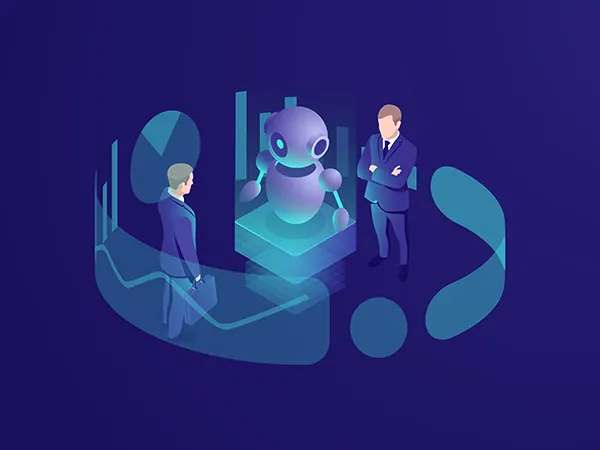Building a Future-Proof Contact Center with AI

As 2025 dawns, artificial intelligence (AI) is transforming contact centers into dynamic hubs of customer experience. But success hinges on more than just adopting the latest tech—it requires a strategic approach. This article explores AI readiness, humanizing AI interactions, compliance strategies, and the risks of autonomous AI systems to create a roadmap for a resilient, future-ready contact center.
Laying the Foundation for AI Success
AI readiness is about preparing your organization for sustainable transformation. Think of it as building a house: you need a solid foundation before adding walls. Start by assessing your current state. Are your data systems clean, organized, and accessible? AI thrives on quality data, so siloed or messy databases can derail projects. Next, evaluate your team’s readiness. Are agents open to new tools, or do they fear being replaced? Transparent communication and training can ease these concerns, fostering enthusiasm.
Governance is another cornerstone. Ethical AI use—ensuring fairness, transparency, and accountability—builds trust with customers and regulators. Create a roadmap that outlines short- and long-term goals, such as automating routine inquiries or enhancing analytics. Pilot small projects to test systems, scaling up only when you’re confident. This approach minimizes costly missteps, like failed implementations that drain budgets. By aligning people, processes, and technology, contact centers can turn AI into a competitive advantage, delivering seamless service that stands out.
For example, a contact center might begin by integrating AI to handle simple inquiries, like password resets, while monitoring call volumes and agent feedback. This phased approach allows teams to adapt, ensuring AI complements human efforts. Regular check-ins with stakeholders—managers, agents, and IT—refine the strategy, addressing issues like system integration or user adoption early. A well-prepared operation avoids the pitfalls of overhyped AI solutions, focusing on practical, measurable outcomes.
Humanizing AI for Better Connections
Autonomous AI systems, which act like virtual teammates, are game-changers for customer interactions. Picture a customer calling with a complex issue, like a disputed charge. The AI instantly retrieves their purchase history, flags relevant policies, and suggests tailored responses, all while the agent focuses on empathy. This synergy boosts efficiency and satisfaction. With customers valuing experience as much as products, personalization is key. AI analyzes data from calls, emails, and social media to anticipate needs, turning frustrated callers into loyal advocates.
For instance, a retail contact center might use AI to identify a frequent shopper’s preferences, offering a discount code during a call to resolve a complaint. Chatbots handle routine tasks—like tracking orders—freeing agents for high-value interactions. But humanizing AI goes beyond functionality. Program systems to use natural language, mimicking conversational tones that feel warm, not robotic. A chatbot might say, “I’m sorry for the hassle—let’s get this sorted!” instead of “Error detected.” Regular feedback from agents ensures AI aligns with real-world needs, creating a seamless blend of technology and human touch.
Training is critical to make this work. Agents need to understand how to leverage AI insights without sounding scripted. Workshops can teach them to blend AI-suggested responses with their own style, ensuring authenticity. For example, an agent might use AI’s data to offer a personalized apology, then add a personal touch based on the customer’s tone. This approach creates interactions that feel genuine, building stronger customer relationships and enhancing satisfaction.

Compliance: A Strategic Asset
Compliance isn’t just about dodging fines; it’s a way to build trust and streamline operations. With remote work prevalent, managing data across cloud platforms like video calls or messaging apps is complex. AI compliance tools act like vigilant overseers, analyzing thousands of interactions for risks. In regulated industries, such as finance or healthcare, they flag issues like missed disclosures or improper data handling, preventing penalties.
These tools also provide insights to improve service. By analyzing call outcomes, they reveal which approaches lead to happier customers or faster resolutions. For instance, AI might show that empathetic phrasing reduces escalations, guiding agent training. Compliance data can optimize workflows, identifying bottlenecks like lengthy verification processes. A financial contact center might use these insights to streamline identity checks, cutting call times while staying compliant. By treating compliance as a strategic asset, contact centers enhance efficiency and customer confidence.
Navigating Autonomous AI Risks
Autonomous AI’s ability to make decisions independently is powerful but risky. Fraudsters can exploit it, using deepfake voices to impersonate customers and access sensitive data. Imagine a scammer mimicking a client to reset account credentials—without safeguards, the consequences are severe. To counter this, train agents to spot red flags, like inconsistencies in account details. Cryptographic verification, such as digital signatures tied to devices, confirms identities before sensitive actions.
A risk matrix helps prioritize threats, focusing on high-impact scenarios like account takeovers. Regular security drills, simulating deepfake attacks, keep teams sharp. For example, a drill might mimic a fraudulent call requesting a funds transfer, testing agent responses. Balancing AI’s benefits with robust defenses ensures it remains a force for good. A contact center might use AI to streamline password resets while requiring multi-factor authentication, maintaining both efficiency and security.
The Roadmap
To build a future-proof contact center, start with AI readiness: assess data, train teams, and set governance. Embrace autonomous AI to personalize interactions, ensuring it feels human through natural language and agent feedback. Leverage compliance tools to boost trust and efficiency, using insights to refine service. Guard against fraud with training, verification, and risk management. This holistic approach creates a contact center that’s agile, secure, and customer-focused, ready to thrive in 2025 and beyond.

